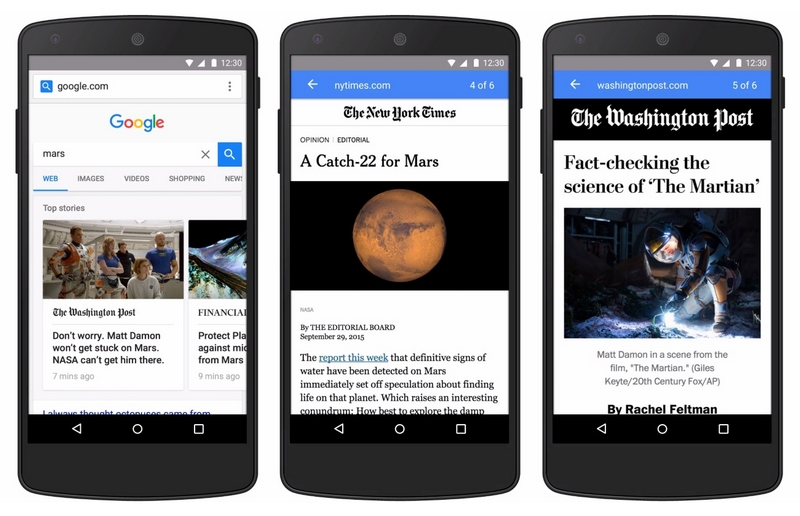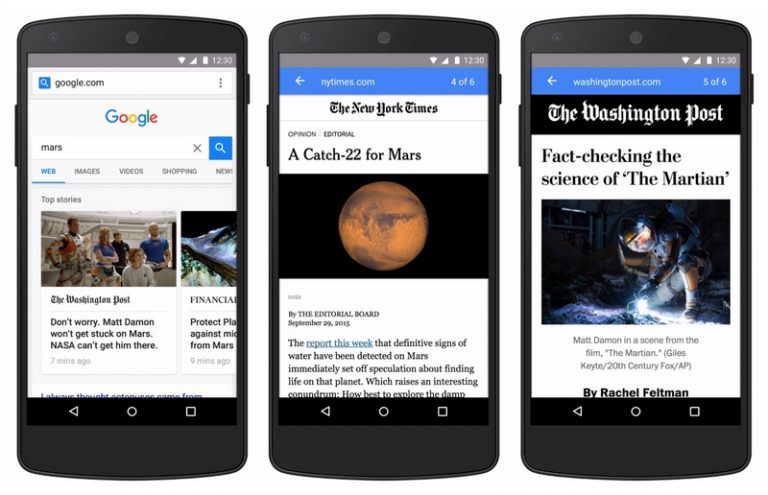Google AMP. Two years on and Google AMP has become a huge force behind the way we use our mobile devices. By cutting loading times up to 85% Google has drastically reduced the bounce rate for users viewing content, this alongside the drop in desktop use has made mobile focused marketing the way forward. With ads becoming more prominent, yet much more manageable, the erasure of pop ups and regulated validation before ads are published, we’ve seen a reduction in malware incidents and users becoming more amenable to the platform.
Now over 2 billion mobile pages use AMP and over 900k domains, outstripping all competition by miles and leaving AMP as the clear market leader. But what does this mean for the future of ecommerce? Will mobile browsing eclipse all other media types, or will the status quo remain the same?
Google AMP Vs Apps
Speed
The desktop is now a thing of the past. Over 2.1 billion people own a smart phone, so it is no wonder that last year the mobile overtook the desktop for the volume of page searches. However a new war is beginning to emerge. Apps. Apps are a huge part in what we consume on our mobiles , having accounted for 88% of all mobile interactions . Because consumers are all about efficiency, even a second delay can have a marked impact on our attention span leading to a 7% increase in abandonment of loading pages. So up until recently slow loading times on the web would lead us to gravitate towards apps. Now with the reduction in load times, AMP pages are the way forward.
Cost
Large conglomerates are the only ones who can afford to create truly great Apps, with some costing over £1,000,000! AMP has allowed SMEs to develop pages more easily, whilst simultaneously giving them the infrastructure to promote their products. With advances in technology, coding and marketing practices, Google has an advantageous position, well able to reap the benefits of ad revenue. Especially due to recent trends in content marketing. Flashy visuals have become less dominant and the standardized web page that AMP uses lends itself well to this development.
Should I use Google AMP?
As a business it really depends on your size and budget. SMEs will have to utilize web pages as developing a personalized app for your company will be too expensive (at least if you want to do it properly). Apps whilst on the decrease are still used heavily, with 5 in ten apps still being used at least 10 times after being downloaded. However Google AMP isn’t without its flaws. A loss of possible avenues to advertise (No more pop up ads, thankfully) will lead to a cut in ad revenue . You will also be at the beck and call of Google, forfeiting all creative licence when you develop the theme for your site.
Ultimately the decision is up to you, but my safe bet would be on Google AMP, with downloads of apps having fallen 38% since 2014 and since April 2016 AMP page hits have multiplied five fold.
The redundancy of responsive web design for delivering content is now becoming apparent, AMP fulfils the role it previously occupied. Essentially AMP and Responsive both seek the same goal (seamless integration of page design on mobiles) its just that Google does it far more cheaply. However if you do have a responsive design, then fear not, they are easily integrated with AMP. So from a business perspective what kind of uptake will you see in terms of view rate and ad exposure? Here are some quick stats (Study of 150 publishers).
- 80% of publishers stated they had higher viewability rates
- 90% of publishers saw greater engagement rates with higher click through rates (CTRs)
- The vast majority of publishers saw higher eCPMs
Mobile Ecommerce
But that’s not to say that apps and responsive design are going to become obsolete, they still represent a large part of mobile usage and will continue to do so, and I can’t see a paradigm shift happening within the next couple of years in terms of a substitute to the app. These days the world changes and adapts so quickly that one month can be completely different from the last, so being dynamic and able to react is key.
However if you want real competitive advantage, then AMP presents you with an opportunity to market, advertise and sell online more aggressively than your competition. One long term trend likely to come about is users going into Content Shock. Essentially, this theory proposes that the amount of content on the internet will become so great that consumers will be overwhelmed and will either become indecisive with regards to who they trust or will commit solely to a single authority. This means developing a way to maintain sustainable, competitive advantage will become increasingly difficult.
While the general populace has taken to using mobiles for browsing, they still prefer desktops for purchasing. People are using mobiles to research products before going home and committing to a purchase. While many would point to this as evidence of preference for desktops, its not the case. The whole process of purchasing is a journey, from introduction to post purchase, by managing every element of that journey you will increase conversion rates of all your platforms.
Ecommerce Worldwide
So what trends will we see on a wider scale?
Chat-bots will become prominent,with prior introduction to ‘Okay Google’, Siri, Bixby and Cortana. We’ve been primed for this development. With large uptakes in the use of Facebook messenger. Utilizing chat-bots to engage users will drive your interaction up. User generated content (UGC) will dominate, reviews informing us of the quality of goods will continue to massively impact purchasing behaviour. In fact a customer is 97% more likely to convert after interacting with UGC. The development of a single ecommerce network that utilizes omni-channel marketing will revolutionize the way we shop, by managing all purchases via a central database each step of the experience can be optimized and personalized. This once again relates to how finicky people are with their time now.
Pros and cons of Google AMP
The Pros
- Faster loading speed for mobile users,up to 85% faster.
- (For Advertisers) Faster loading of adverts, which tackles the rate at which users scroll past.
- It will increase the ranking of your web in terms of SEO. Due to the way Google prioritizes speed of loading.
- More people will actually read your content. The bounce rate of people leaving your site due to load times will decrease dramatically.
- Malware present from ads and pop ups will become a thing of the past. Validation of ads means they will all be safe and of high quality.
- Google analytics makes reviewing stats that much easier.
The Cons
- AMP isn’t easy to implement especially if you already have your site up and running. Without someone trained in coding getting AMP HTML to work can be a nightmare.
- Customization of the webpage with AMP is minimal at best- as it uses a prerequisite design set out by Google.
- There are now less avenues available to advertise as Google AMP blocks pop up ads.
- The interactivity of the site is severely diminished, leaving only the text to hook users
The Future?
Google AMP and Responsive web designs have made marketing on a level playing field a reality. The future looks bright for those smaller businesses who have interesting products, but struggle to get across their brands. But as we know, constant innovation means the death of those that don’t keep up. So from our perspective, the key to success will be prediction of future trends, along with dynamic reaction to immediate developments.
With society becoming more mobile, the need for employees to have access to databases on their phones has become essential. If your sales teams are in need of a piece of software to instantly update stock changes, CRM management, or even accounts then Khaos Control Cloud may be what you need. Request a free demo here!


